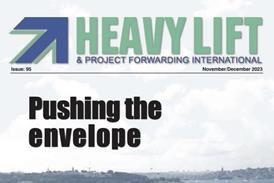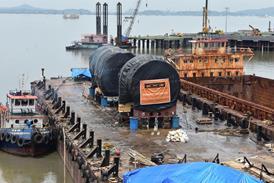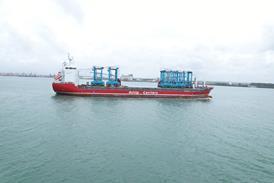April 5 - Nine months on since the implementation of the SOLAS amendment requiring the verified gross mass of packed containers (VGM) to be obtained and communicated prior to loading on board a ship at the point of export, anecdotes abound - and do not im
Writing in the latest edition of the company's magazine, Peregrine Storrs-Fox, risk management director, says it has thus far proven impossible to gather definitive information about the level and accuracy of compliance.
He writes: Feedback from World Shipping Council members reported in September 2016 stated that 95 percent of shipments had a VGM value and there is little reason to believe that this has not continued to improve. However, some have cynically noted with amazement that the industry collectively learnt how to communicate a specific piece of information between June 30 and July 1. Candidly, many recognise that it is impossible to rely upon the information given, albeit that nominal compliance has been achieved.
The stories include the apparent compliance in countries that, at the date of implementation, did not have a single calibrated weighing device. More worryingly, there are also plenty of stories that a significant percentage of declared VGM values are found on subsequent weighing of the packed container to be discrepant by more than 1 tonne. In addition, it is reported that voyage deadloads (the difference between manifest weight and draft displacement measurement) have continued to be into thousands of tonnes.
Furthermore, there are rumours of both commercial and governmental obfuscation. In the first case, charges added for little or no action undermines stakeholder trust and relationships. For the latter, there have been reports of fines being levied, for example in relation to customs duties, where there has - entirely correctly - been a difference in the cargo weight declaration and the VGM value (which additionally takes account of the tare mass of the container unit, and dunnaging and securing materials).
Information is scant on any competent authority taking enforcement action in relation to the validity of the VGM value, but the inference is that many national governments are either too resource-challenged or focused on more pressing regulatory issues. This would seem to compound the fact that in many states the maritime administration undertaking at the International Maritime Organization (IMO) to implement the amendment is not the government department charged at national level with enforcement.
Despite all these factors, there may be good reasons to be somewhat sanguine about progress towards effective implementation of VGM globally. This would not include the fact that no incident attributed to weight mis-declaration has occurred in the intervening period. There is little doubt that the vast majority of the supply chain industry is now aware that there is a specific requirement to communicate a mass value called VGM; this is no mean feat when considering the millions of shippers globally, albeit that the focus is on the much more focused waterfront interchange.
More importantly, a clear safety stake has been driven into the ground. Incrementally, the industry can continue to build out from this point with related safety and efficiency initiatives that will have the potential to restore something of utmost good faith through the supply chain.
















